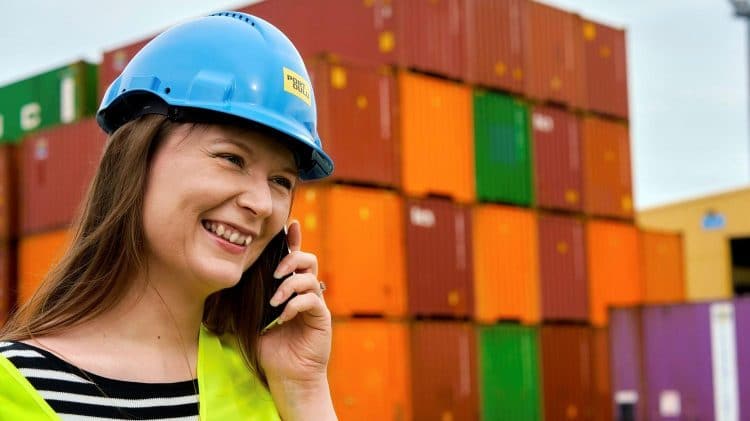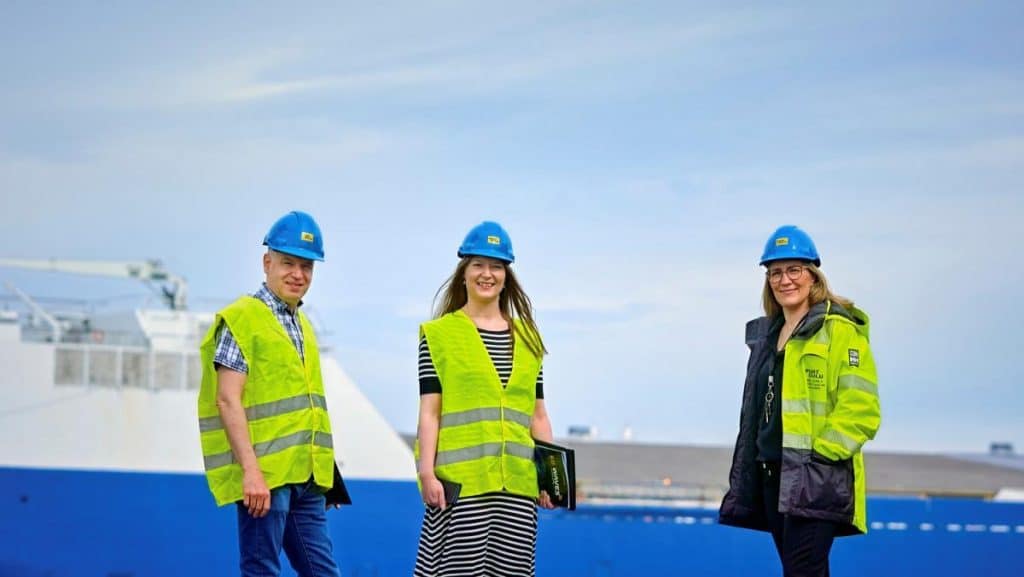
Digitalisation boosts business
Digital business can be found in all sectors. Researchers at the University of Oulu analyse opportunities for digitalisation and help companies to develop a new business model. Their partners include the Port of Oulu, which is building a 5G local network with digital services.
“Digital business is any business that digitalisation is changing,” says Researcher Petri Ahokangas from the University of Oulu Business School. “The key question is how digitalisation can make the business more profitable, more efficient, easier…”
Once we have the answers, the company can develop a digital business model. However, digitalisation is developing fast and becoming more widespread. Seeing the business opportunities it offers requires foresight – or the help of researchers.
This is where Ahokangas and Marja Matinmikko-Blue, a researcher at the Center for Wireless Communications (CWC) research unit, come into the picture. When a new technology emerges, we start to look at what kind of business opportunities it opens up and how the company should apply the new technology.
“We start to discover this by bringing together different parties: companies, researchers, public sector operators. We use forecasting methods such as future scenarios and action research, and combine strategy and technology research with it. We help companies map out opportunities and constraints and find solutions. We do not prepare a ready-made business model for only a single company but keep the research at a general level so that others can also take advantage of it,” Ahokangas describes.
The task is often complicated by the fact that these are new, largely undiscovered possibilities of technology, as well as the fact that the operating environment in question is rarely simple and often covers a large area. Usually the target is a ‘hybrid environment’ with many types of stakeholders. The Port of Oulu is an example of this.
“It is a closed area where companies traditionally have their own information systems that don’t communicate with each other. In addition, there is official information, customs clearance, etc.,” Ahokangas says. “When these are combined with digitalisation, all companies at the port can benefit from the added value. Stakeholders can utilise each other’s knowledge, which creates an environment for competition and cooperation. We have not been able to fully exploit these opportunities until 5G. The 5G network will make data move and content services can be built on top of it.”

Local 5G area networks offer new business opportunities
The Port of Oulu is one of the test environments in the 5G VIIMA project coordinated by the University of Oulu. A key element is the 5G-enabled local area network. In the case of 5G, data transmission takes place partially at higher radio frequencies than in 4G, which means that there has to be more base stations and they have to be closer together. This base station density enables local ‘micro-operators’, which makes it possible for a company to have their own 5G network.
5G private networks are one of the most important innovations that will define digital business of the future. New business opportunities associated with these include different platforms that can be integrated into local networks – for example, shopping centre advertising channels.
In the case of the Port of Oulu, data from various sources are collected in the platform and content services are built for stakeholders in the area. For example, we offer a real-time snapshot of traffic within the port, which makes it possible to optimise driving routes and improve safety, says Mira Juola, who is leading the digitalisation project.
The system is not yet complete but is already ready to use. “Our 5G network is in the pilot phase. The technology needed today is affordable, which enables data to be collected in cloud services and shared with the end users. In 5G, network capacity is no longer a problem, for example, when streaming video or using a large number of sensors that produce data.”
Regulation does not keep up with the potential of technology
Sensors are related to 5G’s other novelty, the “Internet of Things,” where various sensors and devices are connected to the network. In future scenarios, sensors, devices, and local area networks will expand into a ‘smart city’, which will also broaden the prospects for digital business. Ahokangas is particularly interested in a pattern similar to the Port of Oulu where ‘competition and cooperation meet’.
“The challenge is how companies’ business models play together in a smart city to create a win-win situation between competitors – and how public sector stakeholders such as cities can influence it. Developing these kinds of business models is still at an early stage.”
Regulation also poses a challenge. “As industry boundaries disappear, regulations for mobile networks and energy networks can collide,” Ahokangas predicts. Regulation often lags behind the potential of technology. Regulation is already hampering digital business, especially in Europe.
“In a recent listing in Wired magazine, no company that had reached a turnover of over one billion in the first five years of their operation was European. Here, the business environment is so highly regulated that new start-ups, such as Uber, are basically prohibited.”
The regulation also applies to new radio frequencies on which 5G is based. Governments hold frequency auctions and, at the same time, shape the frameworks for future digital business. For example, in Finland, Traficom organised an auction at the beginning of June for a frequency band of 26 GHz.
“However, frequency auctions vary greatly by country,” Marja Matinmikko-Blue says. “Some countries offer fewer frequency licences and make money off them, while in other countries, large operators can easily obtain a licence. Countries are also moving from auctions to other models, such as offering local radio licenses.”
The potential of the industrial context is largely unexplored
Utilising and commercialising data, such as reselling it, is one of the key opportunities for digital business. The regulation on this also varies. In America, data is owned by the corporation that collected it, but in many Asian countries the state owns the data and in Europe it is owned by the consumer, Ahokangas points out.
“This is one of the biggest challenges. For example, what data can be collected with sensors?”
The constraints are reflected in the model that researchers map out business opportunities. Solutions should be found from a triangle with sides for regulation, business, and technology.
Opportunities can also be structured as connectivity – content – context – commerce, Ahokangas adds.
“Connectivity (connection to a computer network) is the foundation on which we can build a variety of content services. The next level, the context, is very interesting: What kinds of digital business opportunities are offered by a campus, a factory or a specific use situation – how should the content be structured and what kind of digital services should be sold in them (commerce). “
The context is also closely linked to the platform economy – digital platforms offered by companies, where their customers can engage in value-added activities. According to Ahokangas, the trend for consumer business platforms has been “Winner takes it all” (e.g. Facebook, Airbnb, Uber, Google), but other contexts, such as the industrial environment or the smart city, are still largely untapped.
“This opens up huge opportunities for Finnish business. These contexts do not yet have global leaders.”
For example, the Port of Oulu offers an LTE network in its own context, Mira Juola says. “For the most critical port communication needs, it is a closed data network. We are selling its capacity to operators in the region.”
In principle, in the industrial context even broader digital business is possible. “The activities of ports are fairly similar globally. We’ve received inquiries, and there is interest in commercialisation,” Juola says.
“However, we are primarily looking to provide a competitive advantage for our customers and operators. Employees of different companies who do not know about each other’s operations work and visit the same areas in the port. Sharing information can make a neighbour’s everyday life easier. A new kind of operating model is needed to build digital services, and the University of Oulu has a lot of expertise in building it.”
Text: Jarno Mällinen, photos: Mikko Törmänen